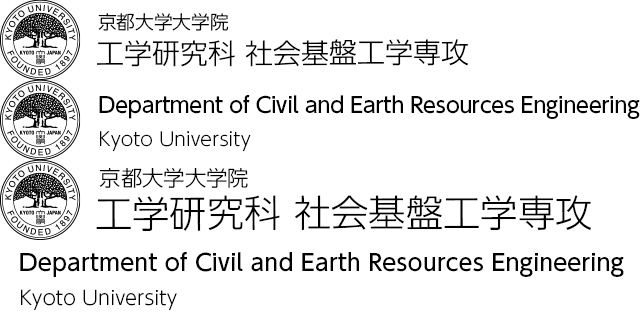Waterfront and Marine Geohazards
It is important to explore basic theories for risk mitigation considering the natural environment and to conduct field observations in order to predict geo-fluid complex disaster processes. We promote integrated studies of riverine and coastal hydraulics, sediment dynamics in water front, turbulence transport, blue carbon etc. Another mission is to develop cutting-edge autonomous controlled robots for field observation.
Academic Staff
Michio SANJOU
Professor (Disaster Prevention Research Institute)
 Research Topics
Research Topics
The sedimentation in esturary induces blockage of river, but it plays significant roles to prevent salinity intrusion and to maintain sand beach. The laboratory promotes integrated studies of riverine and coastal sediment processes based on turbulence hydraulics.
Contacts
Ujigawa Open Laboratory, Disaster Prevention Research Institute
TEL: +81-75-611-0520
E-mail: sanjou.michio.6c![]() kyoto-u.ac.jp
kyoto-u.ac.jp
Research Topics
Integrated analysis of sediment transport and deposition processes in waterfront and marine environments
The delivery of sediments from rivers to coastal oceans has profound implications in estuarine and marine environments. The sediments deposited nearshore are exposed to a wide spectrum of dynamic loading, exhibiting diverse forms of hydro-geoenvironmental phenomena.
On the shorter end of time scale, for instance, deposits of loosely packed granular sediments can undergo liquefaction due to earthquake shaking or storm-wave loading, resulting in flow slides or submarine landslides. On the longer end of time scale, the effects of sediment transport under moderate environmental forcing over a prolonged period of time can add up to serious consequences such as retreat of shorelines.
It is important herein to appreciate the fact that natural sedimentary landforms, such as sand beaches and tidal flats, are products that have come out of exquisite balance of forces, and that they are effectively in dynamic equilibrium. Indeed, this reasoning has led us to exploring the multi-scale nature of the fluid-sediment systems for better understanding the processes involved and for enhancing the predictive capability pertaining to the system responses (refer to Fig. 1).

The behaviour of saturated and unsaturated granular fills behind seawalls subjected to water-level fluctuations
The amenity and safety of waterfront areas has received increasing attention from many sectors of the society. This particular research project aims at establishing a theoretical framework by which to predict, with high accuracy, the behaviour of granular fills behind seawalls under water-level fluctuations.
Specifically, we have developed an analysis procedure by which to consistently model the elastoplasticity, water retention and seepage characteristics of unsaturated granular soil. The capability has favourably been tested against the measured performance of suction, degree of saturation and soil moisture changes in an artificial sand beach on the Ohkura coast.
The related ongoing research projects include laboratory experiments that are designed for looking at the processes of wash out in the submerged part of a granular fill under water-level fluctuations and for looking at the ensuing process of cavity formation in the unsaturated part of the granular fill (refer to Figs. 2 and 3).
The research project of this sort will contribute to developing a risk management strategy pertaining to artificial sand beaches.
The dynamics of underwater liquefied sediment flow and its implications in seabed processes
The purpose of this research project was to develop a numerical model for predicting the flow dynamics of liquefied granular soil in coastal oceans. Specifically, it proposes a workable analysis procedure that can describe the mobility and internal flow structure of the liquefied soil with consideration of the process of solidification that should occur in the flowing sediments.
In order to describe the propagation of solidified zones in the course of subaqueous liquefied sediment flow, we combined a system of Navier-Stokes equations with a consolidation equation in a consistent manner, and solved the entire equations using the method of finite differences under moving boundary conditions. Due consideration was given to the concurrent evolutions of the flow surface as well as of the internally formed interface between the fluid and solidified zones. The analyses for collapse of a body of liquefied soil into ambient fluid under gravity show that the liquefied sediment flow manifests itself as a decelerating gravity flow due to the dynamic interaction between the flowing liquefied soil and the progressively solidified zones in the sediment (Fig. 4).
